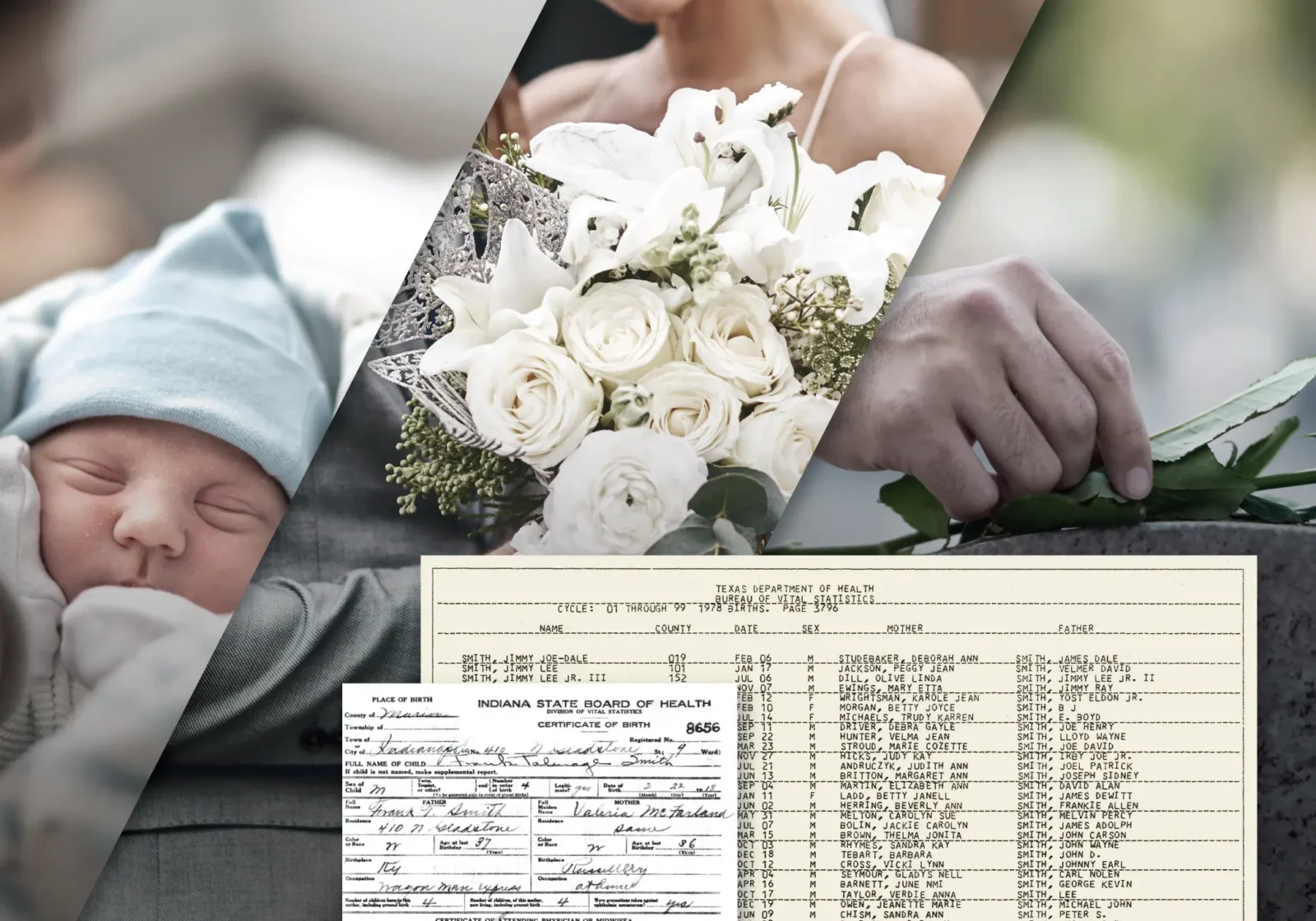Vital records are civil documents documenting key events such as births, marriages, and deaths. They can provide stepping stones for further research and clues about family relationships.
Unlike your checking account balance, a vital record must be preserved for years or centuries. It can’t be easily updated.
Birth Certificates
Most Western countries have used the standard birth certificate for over a century. You may be able to find a copy of one for yourself and your parents, but access to your ancestors’ certificates may depend on how far back they were born and the legal rules of their place of origin.
Look for records at the local level, too. Before state-level record-keeping began, towns often kept birth, marriage, and death records. Even if your ancestors lived in a large city, you might have luck finding their original hometown records at the town clerk’s office or a local genealogical society.
Search online or consult a published guide. Most states and regions will offer similar services on their websites, but you should review the protocol for each before attempting to order a certificate. Some have different requirements for immediate family members than others; you can usually find this information by googling “your state’s vital records department” or its equivalent, such as a health department, secretary of state, or public health agency.
Once you have your ancestor’s official birth certificate, analyze it for clues to research further. It’s also helpful to compare it with their death records, which typically note the date and place of birth and their parents’ names and occupations.
Marriage Certificates
The marriage certificate is the document that tells the story of your ancestor’s love and commitment. A couple applies for a license before the ceremony to ensure they can legally marry and sign the document at the wedding to prove it happened. The certificate will also include other details, such as the marriage date and the officiant.
Marriage certificates, like birth and death records, are essential to discovering your ancestors. While each type of record will offer a slightly different level of detail, they are all essential parts of your family’s history.
Like other vital records, marriage records can be found online through large genealogy websites. However, exploring other sources, such as local archives, libraries, and genealogical societies, is also a good idea. You might even find a relative saved an invitation or scrapbook page with the couple’s name.
Death Certificates
Death certificates reveal fascinating family details, including parents’ names, and sometimes open a new avenue for research. They can also give clues to other relatives, such as a sister or brother who changed her maiden name after marriage. And, if the death certificate lists an informant, that person’s name can provide more clues for further research, such as their relationship to the deceased or their residence.
It’s important to understand that death records don’t always contain complete or accurate information. Some states’ vital records offices only keep records for a specific period. Those records may then be transferred to a state or county archive, library, or historical society. You can find out if this is the case by visiting your state’s website for health departments or vital records offices and checking for links to local genealogy guides.
The information on a death certificate is usually based on the best medical opinion of the certifying physician or coroner when the record was filed. The certifying physician may amend the cause of death on the record within one year after death, but only with additional evidence from other sources. This is why it’s always good to verify the information on a death certificate with primary documents, such as an obituary or burial location. Then, you’ll have more peace of mind that the information is correct.
Burial Records
Knowing where an ancestor is buried is an essential step in genealogy research. However, it’s not always straightforward. It can be challenging to locate an ancestor’s grave – especially if they died before the creation of death certificates.
Fortunately, some common-sense steps can help researchers work out the details of their burial. First, it’s essential to try and determine when an ancestor died and where they lived. This information can be obtained by searching for obituaries or other relevant records, such as land or census records, city directories, and written histories of the area.
Once it’s possible to pinpoint a home address, it’s then a matter of looking for cemeteries within a reasonable radius. This can be done through online searches or by checking the local newspaper archives for funeral listings.
In addition to these tried and tested methods, researchers should try some more think-outside-the-box approaches. These can include mercantile store records (especially for those who died between 1700 and 1900), which often contain receipts for funeral services. Alternatively, genealogical societies, local history groups, funeral homes, and university archives can all be helpful sources of information about local cemeteries and burials. It’s also worth familiarizing yourself with the meaning of the different symbols on gravestones, as these can reveal clues to an ancestor’s life and death.








Hello!! My name is Annabella
I love to eat, travel, and eat some more! I am married to the man of my dreams and have a beautiful little girl whose smiles can brighten anyone’s day!